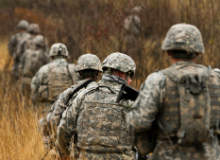
Even before the two-day NATO Summit in Poland ended in early July it was being described as a landmark event for the organisation.
When the last NATO summit was held in Wales in 2014, Russia’s annexation of Crimea and ensuing involvement in Ukraine was only months old and the allies were at odds on how to deal with Vladimir Putin’s strategy. In contrast, the Warsaw summit showed the alliance working at its best and with a focus on the common interests of all its members.
Speaking at its close Secretary General Jens Stoltenberg said that the alliance was committed to delivering on its plans and that “NATO remains a fundamental source of security for our people, and stability for the wider world”. It became clear at the summit that the allies still see NATO – which is approaching its 70th anniversary – as a cornerstone of their security.
During the summit the alliance’s leaders adopted the Warsaw Declaration on Transatlantic Security as an additional document in relation to the summit’s final communiqué. The declaration acknowledged the negative long-term change in the security environment and NATO's response based on an enhanced military presence on the eastern flank and promoting stability to the East and South of the alliance area.
Looking East
The enhanced military presence in the East was the most important outcome of the summit – a measure designed to deter any possible aggression and reassure the alliance’s Eastern members of the continued commitment of the whole.
The tangible impact of the measure is the presence of four allied multinational battalions with extended military tasks in relation to the presence established after the 2014 summit in Wales. The four battalions are being coordinated by the US, UK, Germany, Canada and will be supervised by the command of a division that is being created on the basis of the Polish formation.
The US battalion will be stationed in Poland, the UK contingent will be based in Estonia and the German and Canadian battalions will be stationed in Latvia and Lithuania respectively. The intention is for the battalions to carry out a variety of roles in the countries involved, but most importantly to act as a ‘deterrent tripwire’ that demonstrates the western allies’ commitment to their eastern neighbours.
Missile defence
During the summit the alliance also announced initial operational capability of a missile defence system that spreads the umbrella of US technology across the rest of the alliance. The missile defence system is designed to give advanced protection of forces and the European part of NATO's territory against attacks by ballistic missiles.
The European site from which missile interceptors will be fired is at a Polish base in Redzikowo; its formation went ahead despite opposition from Russia.
The maritime issue
Alongside these key changes the alliance also agreed a number of major changes to its Readiness Action Plan. These 'adaption measures’ included: enhancing the NATO Response Force (NRF), increasing its readiness and substantially enlarging its size; creating a new Very High Readiness Joint Task Force (VJTF); establishing eight multinational NATO Force Integration Units; enhancing NATO Standing Naval Forces with additional capabilities; agreeing a strategy on NATO's role in countering hybrid warfare, which is being implemented in coordination with the EU; and establishing a framework for NATO's adaptation in response to growing challenges and threats from the south.
Of the above, changes in NATO's maritime stance and naval operations bear closer scrutiny. Before the summit a number of influential think tanks suggested it was time for the alliance to update its thinking to reflect the changing nature of global trade and increased importance of maritime security.
It was clear from the final communiqué that the allies were also thinking along these lines and NATO is to have an enhanced mandate in this area.
The organisation is implementing the Alliance Maritime Strategy, which lays out the parameters for its maritime activities. Activities fall under the areas of collective defence, crisis management, cooperative security and maritime security.
According to NATO, the alliance currently has two maritime operations: a maritime security operation in the Mediterranean and a counter-piracy operation in the Indian Ocean. It is also providing assistance to the refugee and migrant crisis in the Aegean Sea.
At the summit NATO leaders decided to transition the first of these operations, Operation Active Endeavour to a maritime security operation – Operation Sea Guardian – that will be able to perform a broader range of tasks as needed.
Cyber warfare
Another area critics said needed to be addressed more closely by the alliance is cyber warfare and here, the summit did not disappoint either. For the first time NATO leaders officially acknowledged cyber warfare as a separate and important operational domain and called on the alliance to continue to strengthen and develop its capabilities in this domain.
“Cyber attacks present a clear challenge to the security of the alliance and could be as harmful to modern societies as a conventional attack. We agreed in Wales that cyber defence is part of NATO’s core task of collective defence,” the final communiqué stated. ”Now, in Warsaw, we reaffirm NATO’s defensive mandate, and recognise cyberspace as a domain of operations in which NATO must defend itself as effectively as it does in the air, on land, and at sea. This will improve NATO’s ability to protect and conduct operations across these domains and maintain our freedom of action and decision, in all circumstances.”
Whether or not the summit in Warsaw marks a watershed in the development of the alliance remains to be seen. However, it is clear that the allies now see the need to enhance capabilities across a range of domains in order to combat an 'ark of instability' to the south and east of its borders. It now falls to the alliance to implement the strategies set out by its leaders in Poland.




